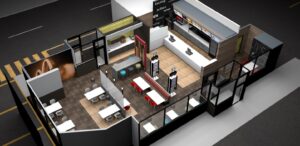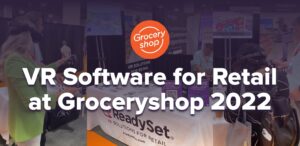Candy, Bar, and Snack Industry use VR to Keep Up with Consumers

Discover the snack trends of 2024 that are pushing the snack bar market and candy industry to innovate and evolve using cutting-edge technology.
The Convenience Store News 2024 Industry Deep Dive revealed numerous snack food industry trends, highlighting a shift toward healthier snacking options and a growing preference for savory flavors. As various snack categories are expected to grow or face challenges, staying ahead of consumers' increasing demands has become more crucial than ever.
In this article, we’ll explore key insights from this snack food industry analysis. Discussing snack industry growth and the innovative solutions CPG companies in the candy, snack bar, and salty snack markets can adopt to meet these evolving consumer preferences.
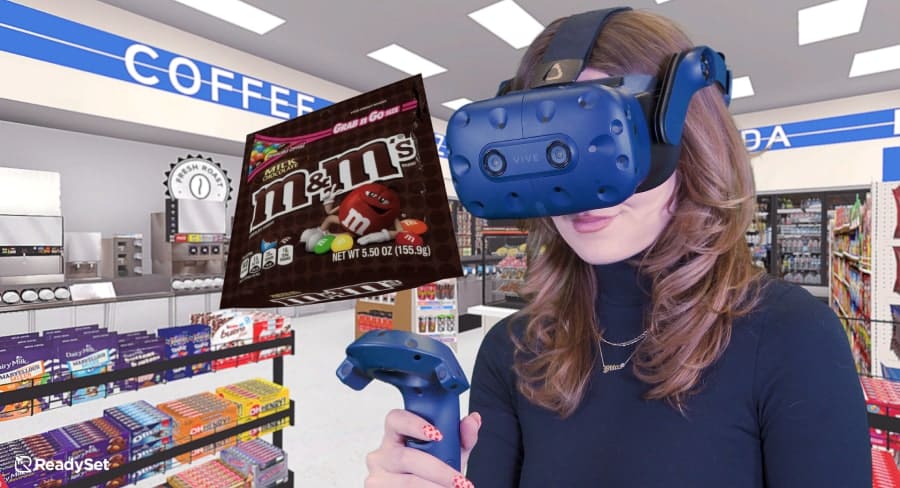
Challenge: Candy Price Increases are Decreasing Sales Volume
Over the past year, consumers have watched their favorite sweet treats become significantly more expensive. Major confectionery companies like Hershey point to record-high cocoa prices and rising sugar costs as key factors driving these increases. Although chocolate bars continue to dominate the candy category in sales, these price hikes have caused candy sales revenue to increase by 9.6%, while the number of units sold has dropped by 4.4%.
As people spend more on sugary snacks, they’re buying less of them. This trend is particularly concerning for convenience stores, where candy typically generates higher average sales per store than salty snacks or other categories. While 2023 was a strong year for the candy category, with all segments experiencing sales growth, the perception of chocolate and candy as affordable indulgences is diminishing. This shift could have long-term implications for both retailers and manufacturers as consumers become more price-sensitive.
Solution: VR Pricing and Promotion Studies
Virtual reality (VR) pricing and promotion studies offer a powerful solution for the candy industry, particularly as rising prices lead to lower purchase volumes and fewer consumers perceive chocolate and candy as affordable indulgences. By simulating realistic store environments, VR shopper research studies enable candy manufacturers to test not only various size, volume and pricing strategies but also the effectiveness of sales promotions.
Promotions are becoming an increasingly important driver of consumer purchases as affordability becomes a concern. With VR, companies can assess how different promotional tactics—such as discounts, bundle offers, or limited-time deals—impact consumer behavior alongside pricing adjustments. This dual approach allows manufacturers to find the optimal balance between pricing, volume and promotions, maximizing revenue while still appealing to cost-conscious shoppers. Additionally, VR studies provide insights into how these factors interact across different product types and demographics, enabling more targeted and effective strategies that help maintain profitability in a challenging market.
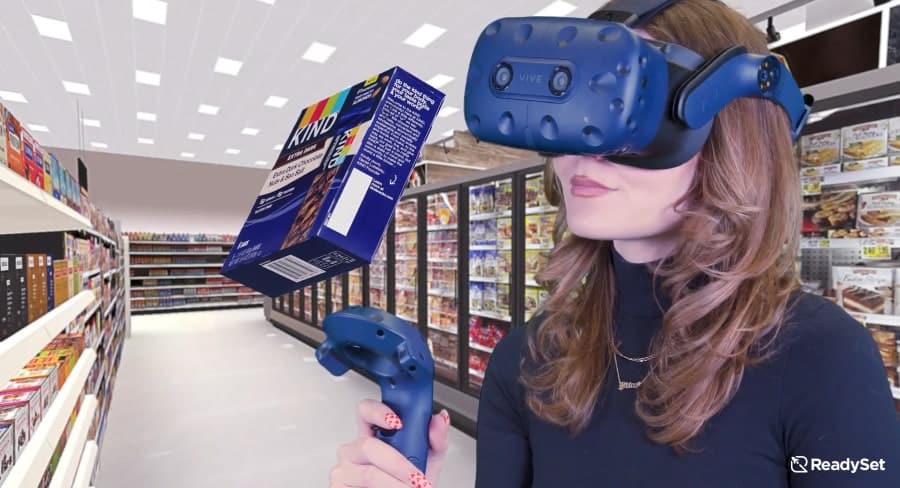
Challenge: The growing snack bar industry
The snack bar segment is one of the most complex and rapidly evolving categories within the snack industry. This is because the category encompasses a wide array of products, including the entire granola bar industry, as well as protein bars and the cereal bar market. While each segment may experience slight variations in trends, the granola bar market is expected to see significant growth.
This growth is driven by a rising focus on health and wellness. Consumers want convenient, affordable snacks with nutritional benefits. The demand is boosted by a preference for whole-grain and natural ingredients. Additionally, snack bars are increasing in popularity because they cater to various dietary needs, which helps maintain their strong demand.
Solution: 3D Assortment Optimization
3D assortment optimization and virtual reality research can be a game-changer for the snack bar industry, especially with its rapid growth driven by health and wellness trends. As demand for convenient, nutritious snacks rises, VR allows manufacturers to design and test various product assortments, new packaging, different size or volumes and price points in a virtual store setting. This helps identify the best product placements and the most appealing combinations of flavors, ingredients, and packaging.
VR technology enables predictive analysis, allowing manufacturers to quickly adapt to consumer preferences. By simulating real-world shopping experiences, 3D assortment optimization helps brands stay ahead of market trends and meet the diverse dietary needs of today’s health-conscious consumers. This ensures the right mix of products is always available on the shelf.
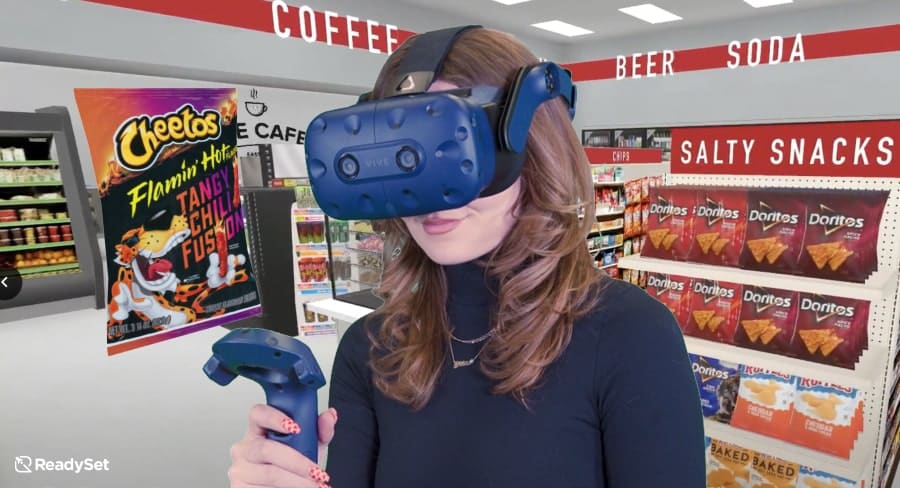
Challenge: Snack Industry Searches for the Right Flavors
Candy and the salty snack food industry have ample opportunities to cater to health-minded and indulgence-seeking consumers, as both markets appreciate new flavors and innovative formats. Spicy flavors, for instance, have sustained their popularity in the salty snack industry and are expected to continue performing well into next year. For confection, tropical tastes such as coconut and mango are also on the rise. Additionally, snack suppliers are successfully experimenting with new formats, including minis, thins, and new package sizes.
Snack bar companies like KIND are pushing the boundaries of flavor exploration with their latest product launches. Their new lineup of healthier bars and granola emphasizes savory and fruit ingredients, reflecting the latest snack bar trends. By integrating bold flavors such as jalapeño, paprika, and smoked sea salt, KIND continues to innovate in the salty snack sector, offering nutritious options that do not compromise on taste.
Solution: Virtual Product Innovation
VR product innovation can greatly benefit both sweet and savory snack manufacturers by helping them identify the right flavors to match evolving consumer preferences. By using simulated 3D models for packaging design of various flavor profiles and formats, manufacturers can quickly gauge consumer reactions and preferences without the need for costly physical prototypes.
This approach streamlines and accelerates the product development process by validating concepts in a realistic virtual environment. VR allows manufacturers to explore and refine trends, such as spicy and tropical flavors, before investing in physical prototypes. Additionally, it supports experimentation with new formats and package sizes, ensuring products meet consumer demands for novelty and convenience.
Subscribe to our newsletter
Get our blogs and the latest retail news delivered to your inbox monthly.
Recent Posts
What is Digital Twin Technology and How it helps Retail 2023
Digital twins in the retail industry are virtual replica stores that can help retailers reduce costs, improve efficiency, and increase productivity. The term digital twin has entered the vocabulary of retail industry experts and leaders. But what does it mean? We will explore the definition, use cases, examples, softwares and common questions associated with digital…
2022 Holiday Shopping Trends & How Brands can be Successful
Consumer trends for this year’s holiday shopping season include spending less and shopping early. Learn how your brand can make it to the cart. The holiday season is fast approaching and this year is unlike many others. Consumers are battling record high inflation, persisting supply chain issues, a labor shortage, increased gas prices and continued…
Virtual Reality Software for Retail at Groceryshop 2022
This year’s show featured a new virtual reality shopping technology for retailers and brands to enhance consumer experiences. The Groceryshop conference in Las Vegas is a leading event for CPG brands, supermarkets, c-stores, drug stores, discount stores, warehouse clubs and other grocery retailers. This year’s Groceryshop Vegas was held at Mandalay Bay on September 19-22. The…

